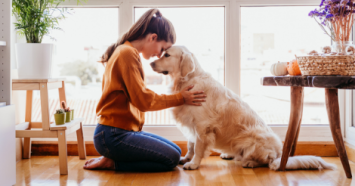
Did you know that your dog can save the lives of other dogs by becoming a volunteer blood donor? By doing so, you and your dog will help to ensure an adequate supply of blood is available to treat critically ill or injured dogs.
The Need for Canine Blood Donors
The practice of banking canine blood is a relatively new concept, with most facilities opening within the last 15 to 20 years. Before canine blood banks, veterinarians had to rely on their own dogs or those of a colleague or client to donate blood.
Today's dogs are benefiting from advances in veterinary medical technology, and blood transfusions are no exception. Also, more owners are treating their dogs as part of the family and are willing to spend money on emergency and internal medicine, orthopedic and soft tissue surgery, and oncology, all of which can require life-saving blood transfusions.
Canine blood banks, which are run much like human blood banks, rely on volunteers that meet blood donation requirements. Some blood banks, such as California's Hemopet, which ships blood products nationwide as well as to Canada and Hong Kong, house donor dogs in on-site kennels. Hemopet's donor dogs are racing Greyhounds rescued from Texas, Oklahoma and Arizona. These dogs remain in the program for about 12 to 18 months before they are adopted to loving homes. Other blood banks, such as the Penn Animal Blood Bank (PABB) at the University of Pennsylvania School of Veterinary Medicine, which utilizes its own blood mobile and stores blood for patients at the university's Mathew J. Ryan Veterinary Hospital, rely on blood drives at veterinary hospitals and breed clubs.
How Can My Dog Become a Donor?
Qualifying as a donor is relatively simple. While purebreds and mixed breeds can be donors, dogs must meet certain age and weight requirements, which vary from program to program but typically range from one to nine years of age and 35 to 50 pounds. Additionally, the dog may be required to:
Pass a physical examination that includes being obedient and calm enough to lie on their side for about 10 minutes, which is approximately how long a collection takes.
Be healthy, which includes being current on their required vaccinations, free of heartworm, and free of blood or tick-borne diseases that can spread to another dog through blood transfusions.
Not on medications other than a possible heartworm and flea or tick preventative, as some medications can be transfused in the blood.
What Happens Next?
If dogs meet the pre-qualifications, their blood is typed and screened for pathogens, such as Lyme disease, Rocky Mountain Spotted Fever, Brucellosis, and Leptospirosis. The blood is typed because dogs, like humans, have different blood types. A complete blood count and a chemistry screen then check the red and white cells, platelets, electrolytes levels, and general organ function. Once collected, the blood is processed into components such as packed red blood cells, fresh frozen plasma, and platelet rich plasma. Thus, one unit of blood can treat more than one dog.
Perks of Becoming A Canine Blood Donor
In addition to plenty of free cookies, kisses, and tummy rubs, some programs offer free physical examinations, comprehensive health-care screening, and blood tests to guard against infectious diseases as long as a dog remains a donor. Others provide free vaccinations and canine goody bags filled with toys, treats, and food. Some facilities, guarantee free blood for all donors. For every unit of blood a dog donates, that dog is guaranteed one unit of blood for free if it ever needs blood anytime throughout its life. The greatest incentive, however, is knowing that your dog is a hero that is helping to save the lives of other dogs.
Where Can My Dog Donate Blood?
We recommend reaching out to your local emergency animal hospitals or veterinary offices to see what programs they may offer for canine blood donations. Additionally, there are a few non-profit blood banks that exist throughout the country. A quick search, or recommendation from your vet, can help you locate the best fit for you and your pup.